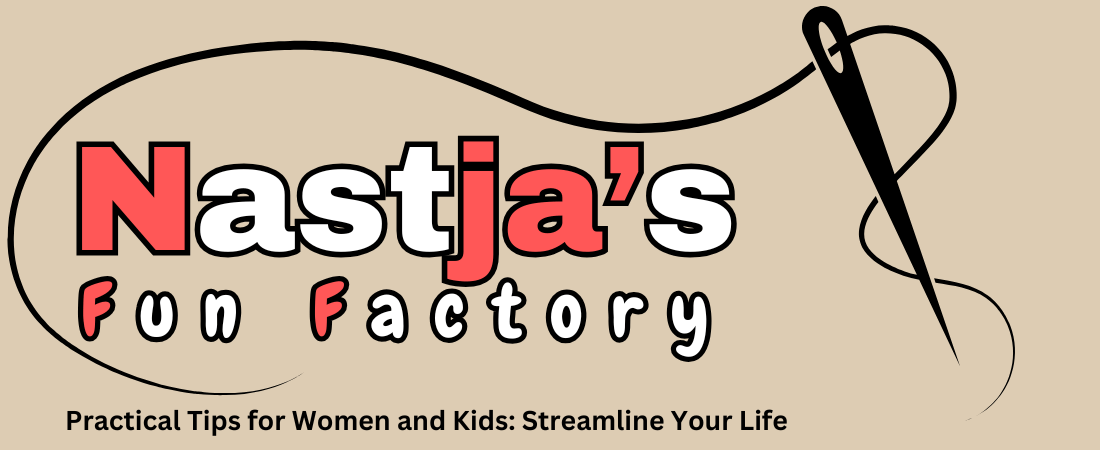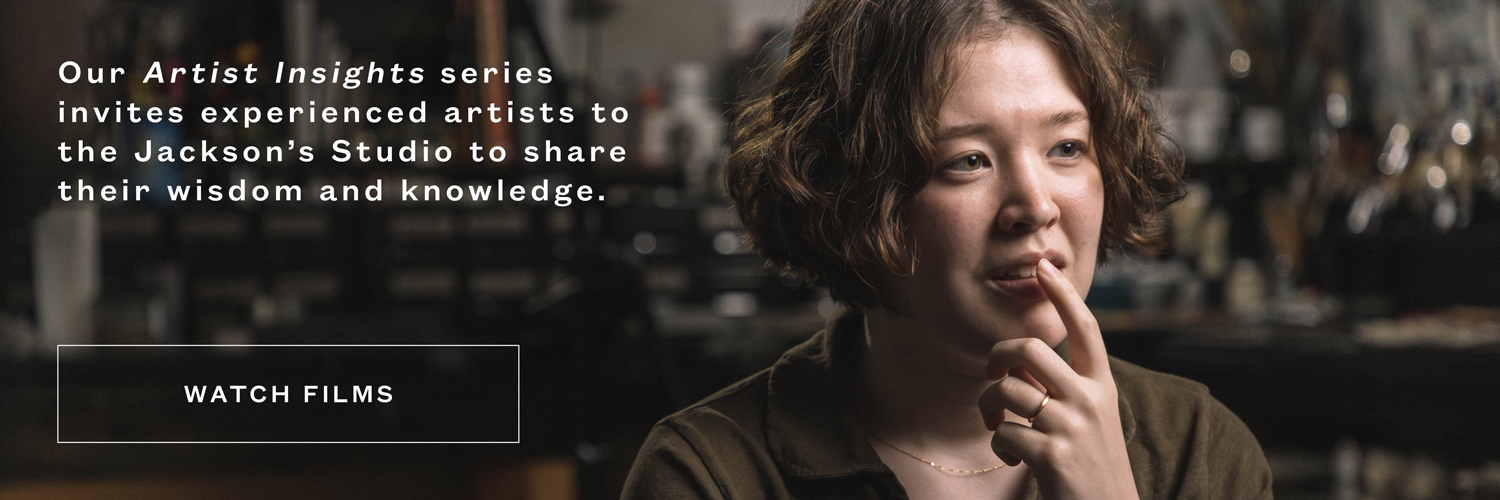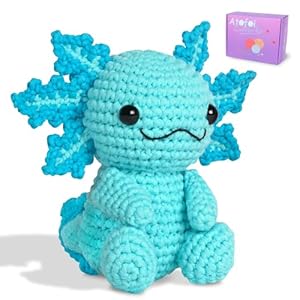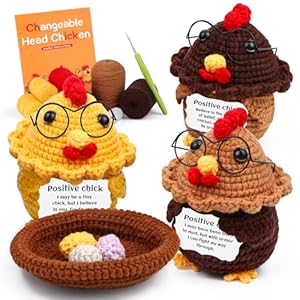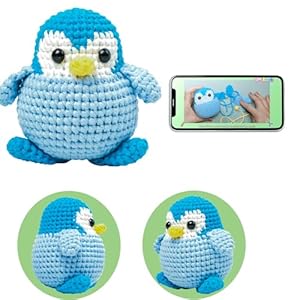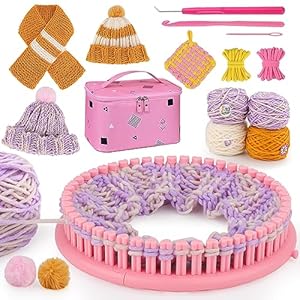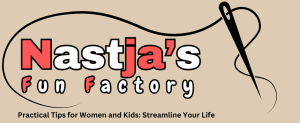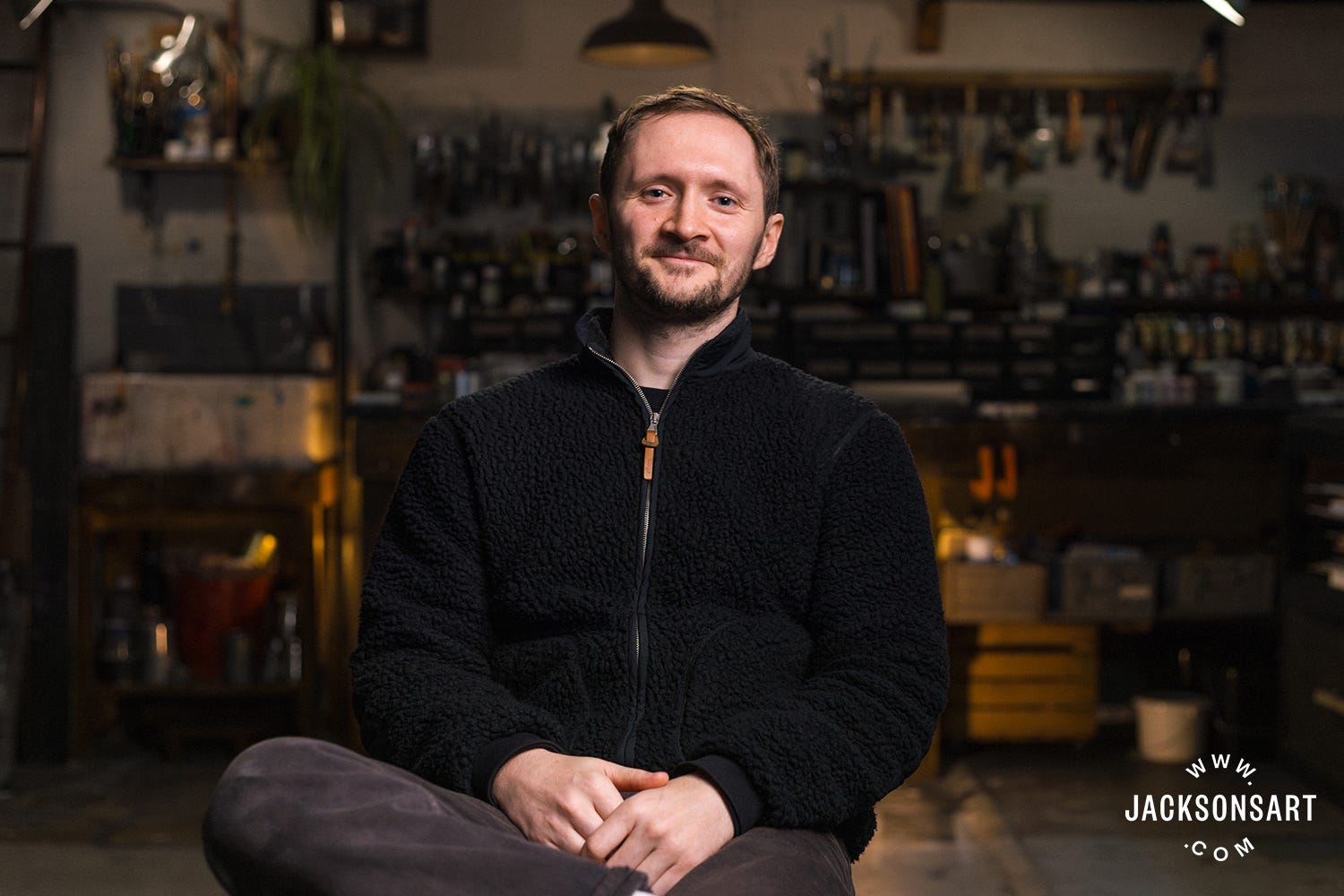
Duncan Montgomery is a London-based wood engraver. In this Artist Insights film, he shares what drew him to the discipline of wood engraving, how poetry inspires his work, and some of the techniques he has learned through hours of trial and error along the way.
Artist Insights: Duncan Montgomery
Contents
0:00 Introduction
0:36 “My interest in literature came before my interest in art”
1:07 “I taught myself through trial and error”
2:01 “You don’t need a lot of gear for wood engraving”
2:26 “Wood engraving is versatile”
3:07 “Some of the projects I do are quite long-term”
4:27 “In terms of planning, I do a lot of drawing”
5:14 “Sketchbooks, reference photos and historical material are part of my practice”
5:38 “I like the idea that images have an afterlife”
6:09 “Wood engraving was a mass-production art”
6:42 “Books of the 16th and 17th centuries are imperfect objects”
7:30 “It can take me some time to get into the zone”
7:57 “It’s frustrating to re-engrave a block that has already been printed”
9:39 “Printing by hand gives a nice handmade quality”
10:20 “Reading and writing poetry has been a big influence”
12:02 “Modernist poets offer some resistance to the reader”
12:38 “I want to incorporate text and image more in my work”
14:00 “Mistakes do happen”
14:21 “Using different woods is part of the variety of the medium”
15:13 “I’m attracted to the detail you can achieve with wood engraving”
15:55 “Ideally, you wouldn’t have a preferred tool”
16:51 ”Always use a tool that’s slightly bigger than you think you need”
17:11 “In terms of inks, it’s got to be oil-based”
17:57 “Knowing when to stop is a matter of experience”
18:27 “All the wood engravers I’ve met have been really generous”
19:09 “There’s something about wood engraving that runs to madness”
19:57 Credits
Extract
I started English literature before I started wood engraving, so the interest in literature probably came slightly before my interest in art. Modern print culture was what I studied mostly at a university, and I was particularly interested in how books of the 16th and 17th centuries were produced, particularly the illustrated books. I spent a lot of time in rare books rooms, pulling up printed books and manuscripts.
The first thing I did was look at what I needed to start. I bought a book by Simon Brett, which is Wood Engraving: How to Do It and it really got me going.
So I taught myself through trial and error, which I think on some level is probably the only way you can do it. I’ve since attended courses to work on specific aspects of my printing skills. But ultimately, there’s no schooling that is a replacement for just doing it, making mistakes, and not making it again.
When you’re drawing something for the fifth or sixth time, finally transferring it to the block, and engraving it very precisely over five or six days, you engage with the subject matter on quite a deep level. I always find that really rewarding.
I work out of my home because wood engraving is relatively simple. You don’t need a lot of gear. So I just have my images or drawings around me and the block in front of me on a sandbag. I sit at a desk, which is also a standing desk for comfort, because the sessions can be quite long. I can be working for eight or ten hours quite easily.
Most of the engravings I’ve worked on are relatively small. I’m quite into the detail and forms of art like illustration or book plate work, where you don’t necessarily go for the biggest poster-level format. Wood engravings are small and refined. And because you spend quite a lot of time refining the image and making it as crisp and bold as you can, they tend to work quite well for branding purposes—like on the covers of products and stuff like that. I’ve worked on wedding invites, CD covers, and album covers, that kind of thing. There’s really quite a lot you can do. So it’s quite versatile from that perspective.

Athens, 2023
Duncan Montgomery
Wood engraving, 10 x 6 cm | 3.9 x 2.3 in
Some of the projects that I do are quite long-term. Currently, I’m working on a project about the history of cold-water swimming in England with a cultural historian. We’ve been working together for two years or so, making prints on that theme, drawing on lots of different archival material, and mixing that with photos and drawings from our trips swimming. We’ve used all sorts of visual prompts for that—everything from strongarming my friends into modelling to Victorian photographs or maps.
One thing I enjoy about this project is that it’s figurative and includes people. I think wood engraving is great for figurative work, and I’ve tried to incorporate as much of that as I can.
For example, I’m working on a book plate at the moment that has different motifs drawn from Morris wallpapers and the copper plate map of London. I’ve drawn motifs from those sources and worked them into a single book plate for an institution.
In terms of planning images, I do quite a lot of drawing. You’re generally working within a small area where you’ve got a block of a certain size and need to make everything fit. It often takes four or five versions of a design to work out. Once I’ve settled on a composition that I like and have a toned drawing to remind me of the relative tone in the image, I trace that. I often cut out the tracing to have a traced outline of the major objects or areas of the image, then draw around that.
Sketchbooks are part of my practice as are reference photos and historical material that might be referenced in the image. I don’t have a single sketchbook that I fill with all my drawings. I tend to keep ideas in my head. Then once I have a clear idea for a particular image, I work it up in isolation on watercolour paper.

He comes with hinds’ feet, swiftly, 2024
Duncan Montgomery
Wood engraving, 22 x 11 cm | 8.6 x 4.3 in
When you’re working from photographs, particularly Victorian and 19th-century ones, there’s a strange thought that someone stood in the same place for 30 seconds in the 19th century, and that act has some kind of echo in art today. I find that quite satisfying. I just like the idea that those images have an afterlife. It’s quite a rich visual resource to draw on.
The 16th and 17th centuries are really before wood engraving was practiced. Most illustrated books in that era had either plate engravings or type ornaments. It’s not until the late 18th century that people started to do wood engravings as opposed to woodcuts or other printmaking forms for illustrated books. It was really a mass production technique at that stage—you could print thousands of times from an engraved woodblock.
The thing that got me quite excited about making prints and letterpress printing, even though I’m far from a letterpress printer, was the fact that the books of the 16th and 17th centuries were often printed on coarse paper. The art was not of a really high standard, and the presses were much more difficult to use efficiently than a modern press, or even a Victorian one.
So they’re imperfect objects in many ways. They’re not fine printing as it’s practiced today, but they’re still really evocative of their era and have a beauty that transcends that occasionally scrappy quality.
It can take me quite a while to get into the zone before I engrave. Once I’m in the zone, time can pass without me noticing. Particularly if I have the radio on, I can engrave for 12 hours quite easily.
You have to be in the right frame of mind to remember that what you are creating is not the finished object—it’s a stamp from which the finished object will be made. And that’s really critical to doing good engraving.

Public Bathing, 2024
Duncan Montgomery
Wood engraving, 11 x 11 cm | 4.3 x 4.3 in
When you’ve got to the end of the engraving process, you’ll kind of feel like there are diminishing returns in terms of the changes you’re making because all the major bits of engraving are already done. At that point, I would tend to do a proof just to see where it is. After that point, you can engrave the block more, but it can be slightly frustrating. Initially, when you’re cutting it, you’ve blackened the surface of the block with Indian ink or something. You’re cutting it away and seeing the wood colour, so you effectively see what the print’s going to look like.
Once printed, you’ll generally use a solvent that dilutes the ink or a rag to get it off the surface of the block. That will push the ink into the recessed incisions where you’ve cut the surface of the block away, staining the wood colour in those incisions. So you can no longer see the design staring back at you—it’s more like a black-stained piece of wood.
Generally, you’d use something like talc powder, put it on the surface of the block, and smooth it into the incisions so you can see where you’re going again. But it’s difficult to precisely manoeuvre a wood engraving tool back into a cut when you’re smearing talc powder and stuff around it. So I make sure the initial print is as close as possible to the finished product because it’s fiddly to do a lot of work on the block once you’ve printed from it.
When I’m printing, I roll the ink out and get it onto the surface of the block using a rubber roller. I have a press, but I don’t have the press in London, so I tend to print by hand a bit more. I think it does give a really nice handmade quality, if you like. It’s not necessarily quite as precise as printing in a press, but you can get really good results. And particularly, I find if you use a kind of thin Japanese paper like Tsunami Senaka or Kitakata, something like that, you’ll get a really decent print.
I’ve published poetry in various places over the years. My output did drop quite a lot while I was doing more engraving. But I’m hoping over the next couple of years that I can rectify that, particularly as I’m spending more time on art generally. And I can combine them both and kind of up my output and hopefully publish more widely.
Reading and writing poetry, I think, has been quite a big influence on me and my wood engraving. I’ve always been a fan of wood engravers who are also poets and had that kind of connection between the two forms.
The experience of writing and the experience of doing wood engraving—they do have some similarities. When you’re working on a piece of formal writing, so it has like a meter or verse form or a particular line, or when you’re working on an engraving, when you’re at one remove from the final product and you’re working on a block of wood rather than the print that comes off it, there’s always an element of surprise where the form, in the case of poetry, or the process, in the case of printmaking, collaborates with you.

The Heath, 2024
Duncan Montgomery
Wood engraving, 17 x 10 cm | 6.6 x 3.9 in
You’ll have an element of surprise and a lack of control almost, even if you try to be very precise in turning out the finished product. I always find that rewarding—to see something click into place in a verse or to see a print come off the block flipped and looking quite different to how you thought it would. So it’s a really nice feeling.
The people I read most tend to be modernist poets, people like Marianne Moore and Christopher Middleton. Sometimes they’re quite frustrating to the reader as they’re offering a bit of resistance. It’s not always the easiest reading experience, but they’re interested in creating forms that keep their secrets a little bit. They don’t explain everything.
Text and image is something I have done a bit and I want to do more in my work. The fact that you include poetry in a piece of art, it kind of has a life that is slightly outside the world of poetry and particularly journals that are more specialist.
You’re putting it on the wall and It’s an immediate thing that can be accessed by other people. But it’s still poetry. I do think that gives poetry another way of connecting with people.
I have this engraving of deer on the block and along the top I’m going to have the first lines from a poem that I’ve written about the image. And then around the bottom I’ll have the rest of the poem. It will be:
“No doubt howls at the gate of the Duke who opens Parliament’s Park, whose paling prongs are high and sharp, whose thistles are official.”
And then around the bottom:
“Little oval beds, they give his grace, his grace, and yes, we minded our conscription less when an average man would call upon our beauty.”
Or there might be a little bit of changes to that text. But that’s basically what I have planned for this one.
Mistakes can happen when you’re doing wood engraving. So there’s no way back. Once you’ve made a cut on the surface of the block, you’re just going to have to work with it. And I tend not to start again because, generally, there’s so much time invested in a wood block. If you’re going to start again after 20 hours, it’s just dispiriting really.

LSA Bookplate, 2024
Duncan Montgomery
Wood engraving, 12 x 8 cm | 4.7 x 3.1 in
In terms of the woods, the kind of luxury gold standard would be boxwood. Lemonwood I find is similar—similar hardwood. It’s a nice surface to work on, similarly dense, and it cuts really nicely. So I tend to use lemonwood for most projects and then pull out the boxwood for the prestige ones or the ones I’m really worried about, just because it’s slightly easier to be precise on and it’s just more pleasurable to engrave. There are other woods that you can use as well, like holly or pear. I think pear is used quite a lot in the United States.
Part of the variety of the medium is using different woods and even synthetic plastic surfaces for different projects. Why did I choose wood engraving rather than woodcut? The difference between those two methods is woodcuts are done on a plank of wood. A plank is cut the same way that the tree is growing, whereas wood engraving is end grain—perpendicular to the direction that the tree is growing in. So you would get typically a circular cross-section, which would be the starting point for it.
And when you engrave on end grain rather than side grain planks, you can get a lot more detail into it. So I was always drawn to the detail you could achieve and also the kind of intimacy with your subject.
In terms of the tools, I think ideally you wouldn’t have a preferred tool. There’s a saying that someone recorded: ideally, you would never have a tool in your hand long enough that it takes the warmth of your hand because you want to be making the cut, selecting another one, and really just using the right tool for the right job.
You really should sharpen your tools all the time. If you’re doing wood engraving, it’s just so they cut the wood so much better. If you go back to them every couple of hours at least—or more often actually—and just give them a sharpen on a sharpening stone. I say that fully in the knowledge that I’ll go days without doing it myself, but once I’ve done it, I always notice the difference. So yeah, keep the tool sharp.

Costumes, 2024
Duncan Montgomery
Wood engraving, 15 x 9 cm | 5.9 x 3.5 in
Always use the tool that’s slightly bigger than the one you think you need because ink is quite powerful. When you print from a wood block, often I tend to find it slightly overpowers the white cuts that you’ve made. So always reaching for a bigger tool than the one that you think you need is a good corrective to that.
In terms of the inks, it’s got to be oil-based because if you use water-based inks to print from wood blocks, they open up the grain on the surface of the wood, and it’s just not a good idea. So keep it to oil-based inks. I tend to use Cranfield ones. My favourite ones are a bit stiffer, so a bit more tacky.
It tends to be letterpress ink. I like the slightly warmer tone—like Seville black, where there’s a slightly orange tone to it. Or conversely, I quite like a graphite kind of black, which is a bit more grey than standard carbon black letterpress ink.
When to stop is obviously a bit of experience worked into that. I generally tend to find out—I finish engraving a little bit too early, or I’ll be not sufficiently bold in the engraving, and things turn out a bit darker than I’d hoped and expected them to. So generally, if I err, I err on that side, unfortunately.
But with experience, I’m getting slightly better at it. In terms of the wood engraving community, I’m a relatively new entrant. In fact, I wouldn’t even necessarily say I know that many wood engravers. But all the ones I’ve met have been really generous, welcoming, and willing to share their secrets. There’s a Society of Wood Engravers in the UK, and they tend to have exhibitions and events and so on. You can join if you’re anything from an enthusiast to a practising full-time artist. Many of their members run courses as well.

Artefact, 2024
Duncan Montgomery
Wood engraving, 8 x 12 cm | 3.1 x 4.7 in
I think there are more different blacks out there than people tend to realise. I’ve done prints, for instance, where partly through organically through the process, which is a fancy way of saying through various mistakes, I’ve needed to do two blocks rather than one. And one virtue you can pull out of that necessity is using different blacks. So, using a kind of fainter impression or fainter black in one area of the print and a really bold, warm black in another area can give an interesting depth to what is effectively a black-and-white print.
I think one of the things I really look for in a printmaking paper, obviously for fine work, is for it to be really smooth. It’s quite a virtue if you’re printing by hand when it’s really thin. Partly just because it compresses onto the surface of the block more easily. But also, you can generally see through the back of it when you’re burnishing the back of the paper, and you can see where you’ve made good enough contact to get a clear print.
And Japanese papers are really good for that. So, like Kozo, for example, or Kitakata or Tsunami Senaka—they’re pretty thin. And some of them, while they’re quite smooth, they have a really nice texture to them. I particularly think my secret weapon at the moment is Kitakata green, which is a very slightly green-tinged paper that gives a really unusual tone, quite different from using just normal white or acid-free white paper. So, yeah, there are lots of things you’re juggling when looking for a good printmaking paper.
When transferring the image onto a block, I tend to do it relatively vaguely or roughly. So, I’ll draw around bits of a tracing, or I’ll just put a tracing on top and put the pencil on the top of someone’s head or something, move it out, and then make a little dot there.
So it’s not really very precise. When I’m doing things that are more precise, I tend to use carbon paper. You just put it underneath the tracing of your drawing and trace through it again just on the outlines so that the carbon paper transfers the drawing more precisely. But I tend not to do that because often just using a ruler and doing a few straight lines or roughly delineating an object is enough for me.
About Duncan Montgomery
Duncan Montgomery is a wood engraver from the North-East of England, now based in London, whose work has been shown at the RA Summer Exhibition, Woolwich Contemporary Print Fair, and the Society of Wood Engravers’ Annual Exhibition. He became interested in wood engraving while studying early modern print culture and subsequently taught himself to engrave.
Currently he is working on a series of prints of Parson’s Pleasure, a male bathing spot in Oxford. He enjoys working collaboratively and is always interested in discussing new commissions or shared projects. He also received the Quiller-Couch Award for his poetry, which has been published in PN Review, Carcanet New Poetries VI, the Sunday Times and Prototype 6.
Further Reading
How to Make a Wood Engraving Sampler
What Makes a Long-Lasting Art Paper?
A Guide to Linocut Printmaking
Inside the Sketchbook of Gemma Thompson
Shop Wood Engraving on jacksonsart.com
Trending Products
